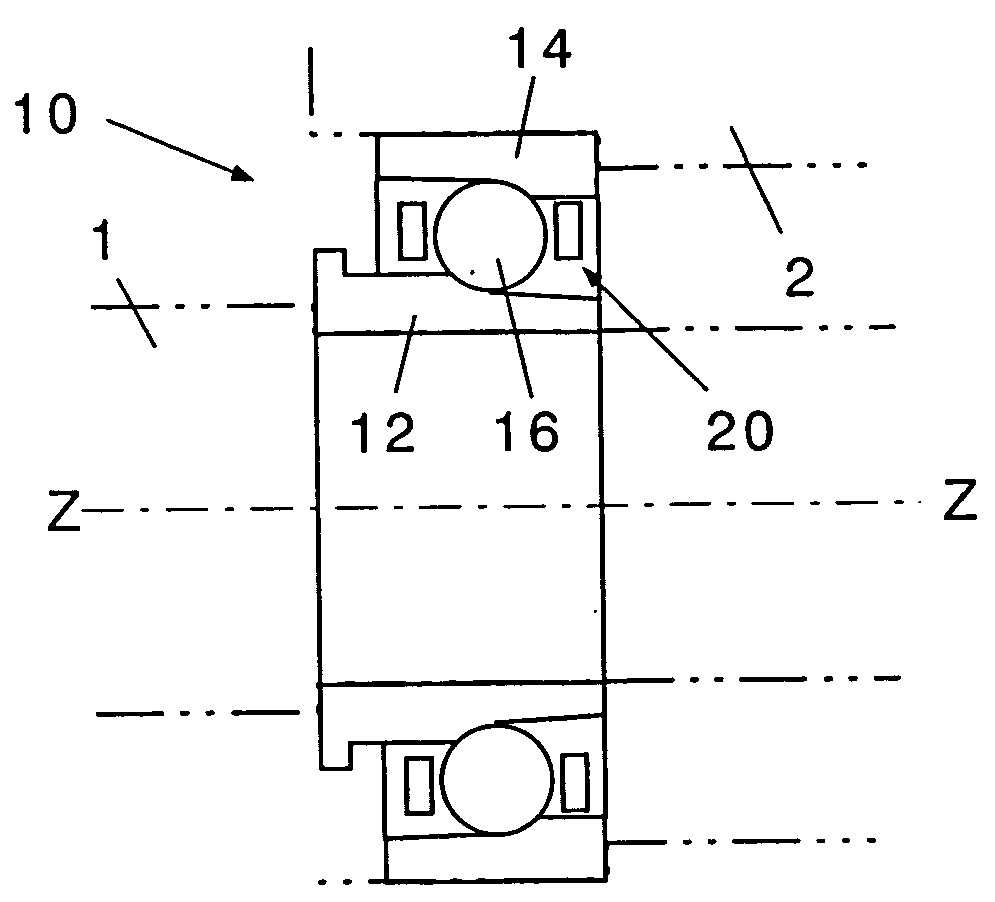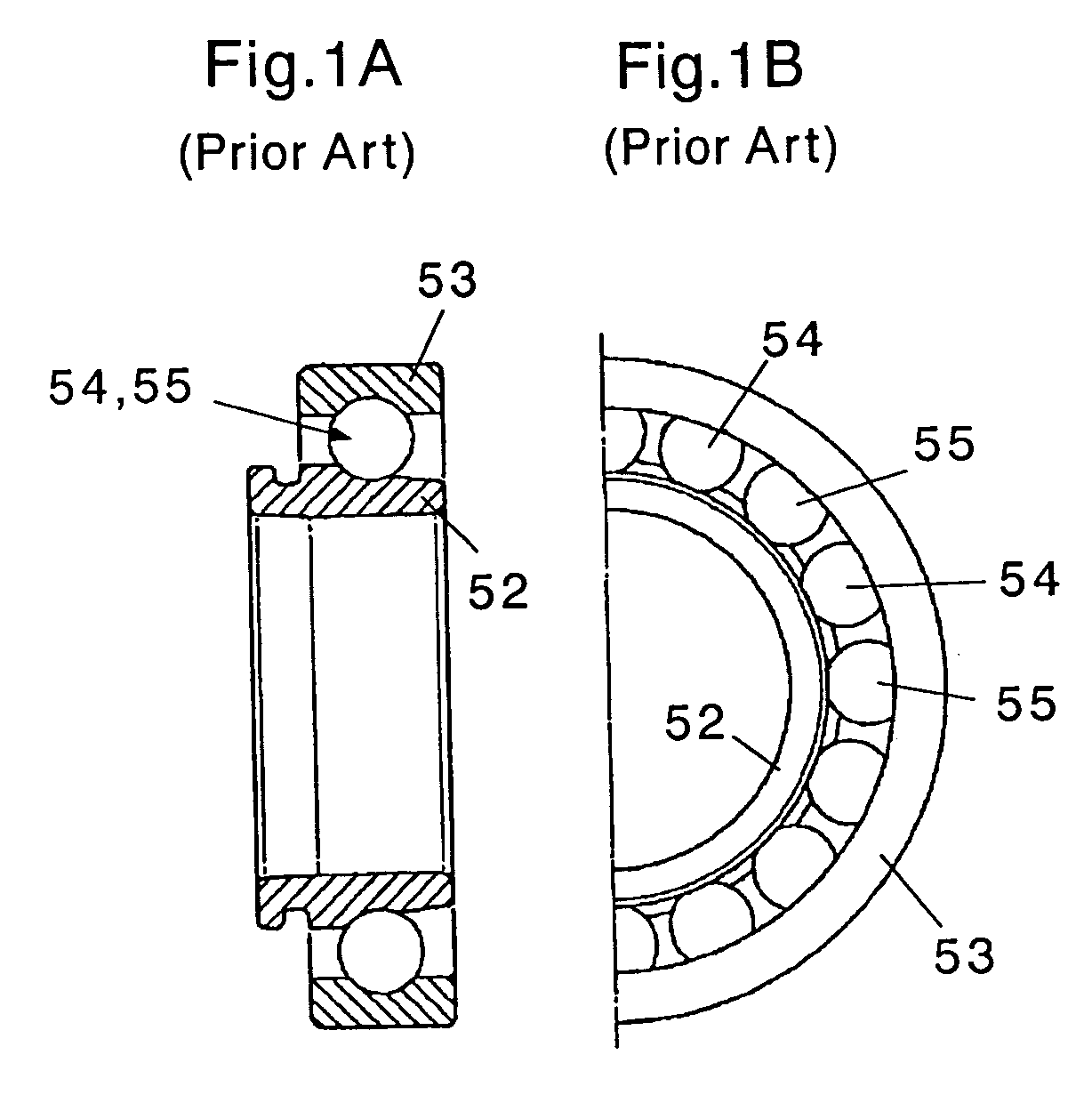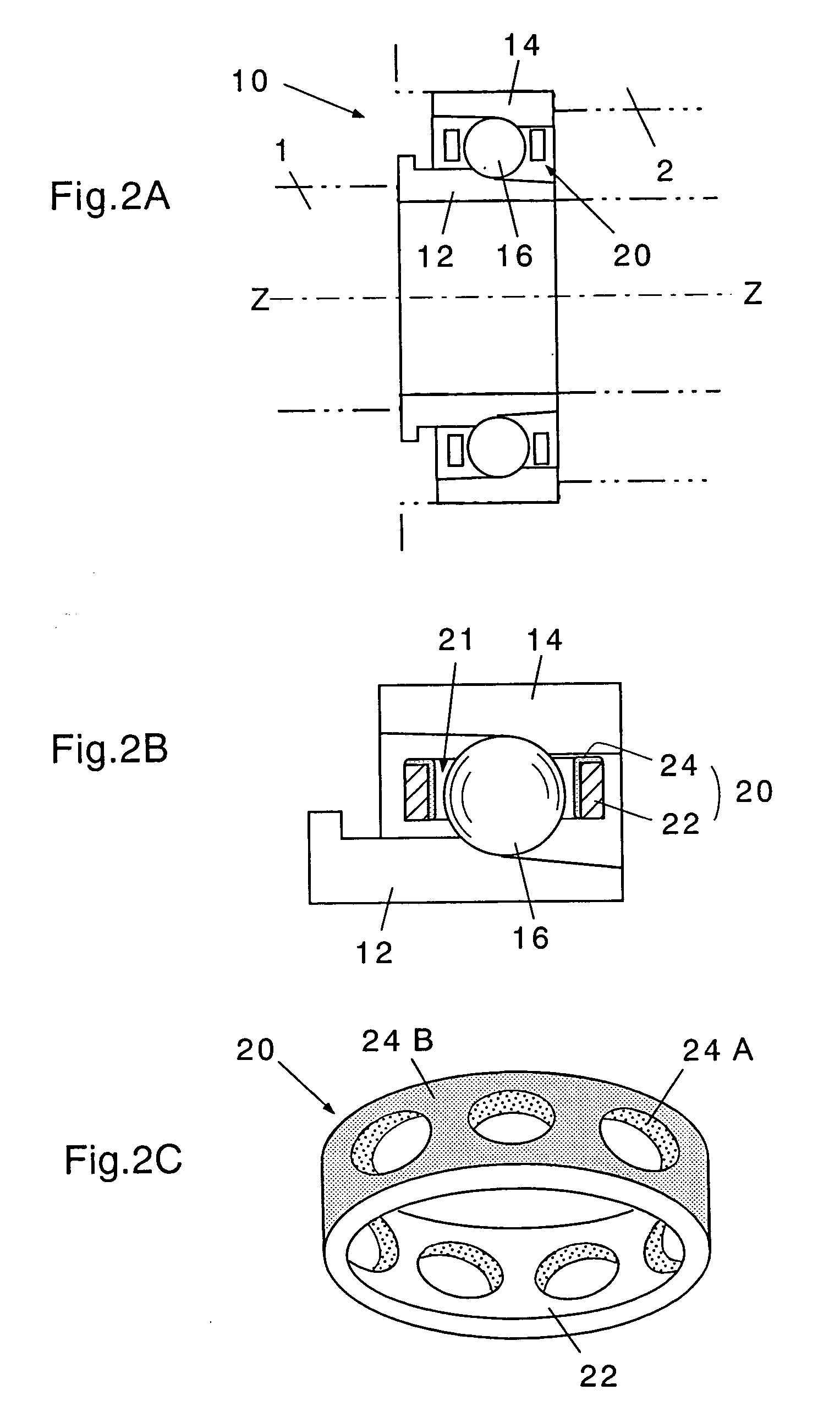Cryogenic, ultra high-speed rolling bearing
a high-speed rolling bearing and cryogenic technology, applied in the direction of rolling contact bearings, shafts and bearings, rotary bearings, etc., can solve the problems of increasing manufacturing costs, complicated manufacturing processes, and inability to use bearings under cryogenic conditions, so as to improve adhesive strength and hence abrasion resistance, and reduce manufacturing costs to a large extent. , the effect of simple manufacturing processes
- Summary
- Abstract
- Description
- Claims
- Application Information
AI Technical Summary
Benefits of technology
Problems solved by technology
Method used
Image
Examples
example 1
Comparative Test 1 on Coating Materials
[0063] In order to evaluate coating materials, a comparative test was done on PTFE with a small amount of anti-wear additive (TP1), PTFE with a medium amount of anti-wear additive (TP2), PTFE with a large amount of anti-wear additive (TP3), and TP3 with a low-temperature sliding additive (TP4) . The small, middle, and large amounts of anti-wear additive mean that the additive ratio of the same anti-wear additive increases in this order. The sliding additive different from the anti-wear additive was added to TP4 in an adequate amount.
[0064] The test was carried out on retainer materials TP1 to TP4 set as pins in a pin-on-disk type transfer tester at a cryogenic temperature (−196° C.) . In this test, the ratio of metal contact (%) was also determined from electric resistance between a ball and a rotating plate in the transfer tester. The test results are shown in FIGS. 3, 4, 5 and Table 1 (under cryogenic conditions).
TABLE 1Cryogenic Temperat...
example 2
Comparative Test 1 on Coating Materials
[0069] In order to further evaluate coating materials, four kinds of PTFE-based test materials (TP5 to TP8) with anti-wear additive and the like added thereto were prepared and the same test as on TP3 and TP4 was carried out at a cryogenic temperature (−196° C.). The test results are shown in FIGS. 6 and 7.
[0070]FIG. 6 is a line chart showing variations in pin friction coefficient at the cryogenic temperature. It is found from this chart that all of TP4 to TP7, except TP8, have low friction coefficients equivalent to conventionally proven products.
[0071]FIG. 7 is a bar chart for comparing the amounts of abrasive wear on the test materials at the cryogenic temperature. It is found from this chart that, though the amounts of abrasive wear on TP3, TP6, and TP8 are relatively large, those on TP5 and TP7 are better than conventionally proven products.
[0072] The above-mentioned results confirm that TP5 and TP7 has performance equivalent to conven...
example 3
Performance TEST on Bearing
[0073] The bearing of the present invention was actually rotated at ultra-high speeds under cryogenic conditions to test its performance.
[0074]FIG. 8 is a sectional view of the structure of a performance tester to test the performance of the cryogenic, ultra high-speed rolling bearing according to the present invention. In this tester, two sets of sample bearings 34 are incorporated with a radial turbine 36 provided at an end of an ultra high-speed rotating shaft 35. The radial turbine 36 was driven by gasified liquid hydrogen (at about −253° C.) and the bearing was cooled by liquid hydrogen.
[0075] The bearing 34 of the present invention was made up by making the retainer body 22 of A5056 aluminum alloy, forming a coating film corresponding to TP2 in Example 1 on the inner surfaces of the pocket holes 21 and the outer circumference of the guideway, baking the coating film, and polishing the outer circumference of the guideway to predetermined dimensions...
PUM
 Login to View More
Login to View More Abstract
Description
Claims
Application Information
 Login to View More
Login to View More - R&D
- Intellectual Property
- Life Sciences
- Materials
- Tech Scout
- Unparalleled Data Quality
- Higher Quality Content
- 60% Fewer Hallucinations
Browse by: Latest US Patents, China's latest patents, Technical Efficacy Thesaurus, Application Domain, Technology Topic, Popular Technical Reports.
© 2025 PatSnap. All rights reserved.Legal|Privacy policy|Modern Slavery Act Transparency Statement|Sitemap|About US| Contact US: help@patsnap.com



